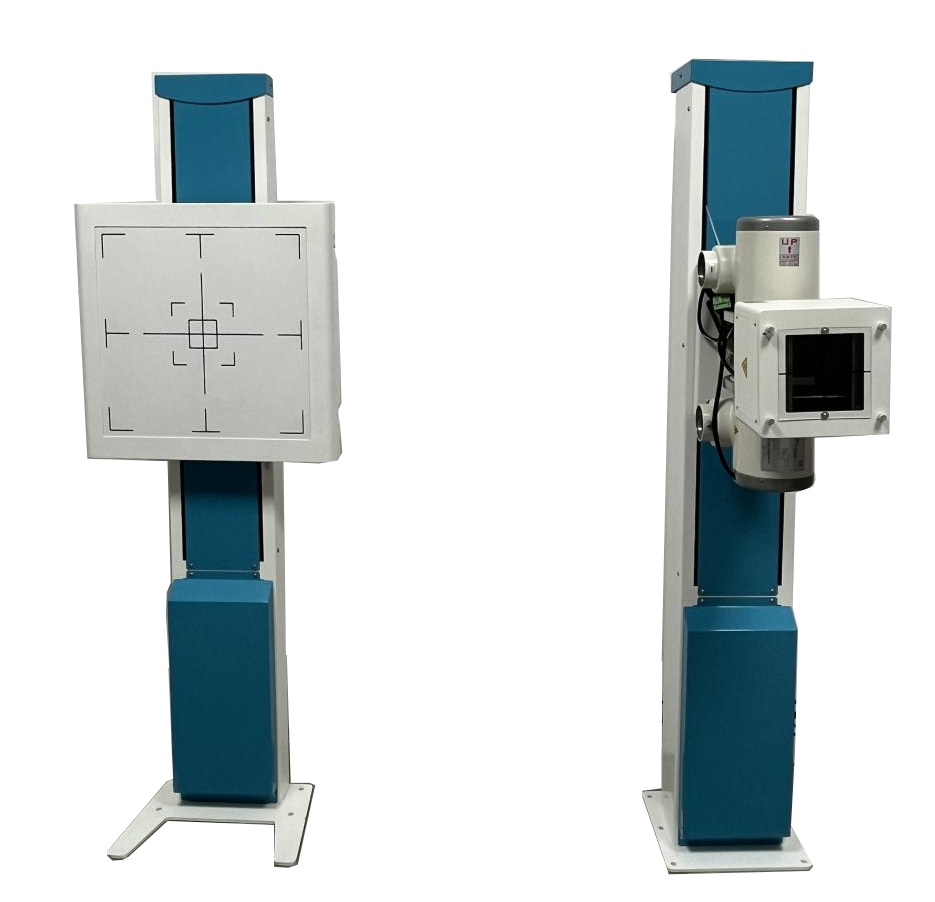Against the backdrop of uneven distribution of medical resources, primary healthcare institutions face numerous challenges in the field of imaging diagnostics. This is particularly evident in remote areas, township hospitals, community clinics, and mobile medical services, where limited equipment and a shortage of specialized personnel severely impact the accessibility of imaging examinations. The emergence of the medical examination vehicle photography rack provides a more convenient and efficient imaging diagnostic solution for these areas. Its mobility and intelligent features enable primary healthcare institutions to better meet the healthcare needs of local residents and enhance their capacity for early screening and diagnosis.
Challenges in Imaging Diagnostics for Primary Healthcare Institutions
Given the disparity in medical resources between urban and rural areas, primary healthcare institutions face significant limitations in imaging diagnostics, mainly reflected in the following aspects:
1. Lack of Equipment: Traditional X-ray imaging equipment is expensive and costly to maintain, making it difficult for primary healthcare institutions to afford advanced imaging systems.
2. Shortage of Skilled Professionals: The number of radiologists is limited, and even when imaging equipment is available, many primary hospitals lack trained radiology technicians, reducing examination efficiency and diagnostic accuracy.
3. Inconvenient Access to Medical Services: Many patients in remote areas must travel long distances to urban hospitals for imaging examinations, leading to high time costs and missed opportunities for early diagnosis.
4. Limited Data Sharing and Remote Diagnosis: Imaging data in primary hospitals are often not interconnected with major hospitals, making it difficult to integrate medical resources effectively.

Technical Advantages of the Medical Examination Vehicle Photography Rack
The vehicle-mounted photography rack is specifically designed for mobile and primary healthcare services, featuring multiple intelligent functions that provide significant advantages in imaging diagnostics:
High Mobility, Suitable for Mobile Medical Services
1. The photography rack is lightweight and can be installed on medical examination vehicles or mobile diagnostic units, allowing quick deployment in townships, rural areas, industrial and mining enterprises, schools, and other locations.
2. Its intelligent adjustment system ensures stable support in various environments, guaranteeing high-quality imaging.
Intelligent Operation, Lowering Technical Barriers
1. Equipped with auto-focus, angle adjustment, and smart exposure control, the rack minimizes manual intervention, enabling non-professionals to capture high-quality images.
2. AI-assisted analysis optimizes imaging quality and enhances diagnostic accuracy.
Remote Image Transmission, Improving Diagnostic Efficiency
1. Through 5G or Wi-Fi connectivity, the photography rack can upload imaging data in real-time to the cloud or PACS (Picture Archiving and Communication System) for remote expert review.
2. The telemedicine model allows primary care doctors to collaborate with specialists in major hospitals, improving the diagnostic capabilities of primary healthcare institutions.
Low Cost, High Economic Efficiency
1. Compared to fixed radiology equipment, the vehicle-mounted photography rack is more affordable and does not require the construction of a dedicated imaging room, significantly reducing equipment investment for primary healthcare institutions.
2. Its high efficiency enables a large number of imaging examinations to be completed in a short time, making it particularly suitable for health check-ups, occupational disease screening, and public health initiatives.
Application Scenarios of the Medical Examination Vehicle Photography Rack in Primary Healthcare
Township Health Centers and Community Medical Centers
1. Township health centers and community clinics serve as primary healthcare providers for rural and suburban populations, yet their X-ray imaging capabilities are often limited due to equipment and staffing constraints.
2. With a vehicle-mounted photography rack, township health centers can offer routine chest X-rays for detecting lung infections, tuberculosis, fractures, and other common conditions, enhancing their medical service capacity.
Mobile Medical Services in Remote Areas
1. In mountainous regions, grasslands, and fishing villages, where transportation is difficult, medical examination vehicles equipped with a photography rack can provide regular imaging examinations for key populations, such as the elderly, children, and patients with chronic diseases.
2. For example, in Tibet and Inner Mongolia, vehicle-mounted photography racks have already been utilized for tuberculosis screening and occupational health checks, ensuring that local residents have access to quality medical resources.
Occupational Health Examinations
1. Workers in industrial and mining enterprises require regular health check-ups, particularly those exposed to high levels of dust, radiation, or chemical hazards, such as coal miners, welders, and chemical plant employees.
2. A medical examination vehicle equipped with a photography rack can enter workplaces to provide convenient chest X-ray and orthopedic imaging services, assisting in occupational disease prevention and monitoring.
Public Health Screening and Epidemic Prevention
1. Mobile imaging equipment plays a crucial role in infectious disease prevention. For example, during the COVID-19 pandemic, mobile radiology units were used for lung imaging screening, helping to identify suspected cases early.
2. The vehicle-mounted photography rack can also be utilized in tuberculosis control and the monitoring of air pollution-related diseases, further enhancing public health efforts.
Future Development and Prospects
With the rapid advancement of smart medical technology, the application of vehicle-mounted photography racks in primary healthcare will continue to expand. Future developments may include:
1. More Intelligent Image Analysis: By integrating AI technology, automatic recognition of lung abnormalities, fractures, and joint diseases will enhance diagnostic accuracy for primary care physicians.
2. Advanced Cloud Collaboration and Remote Consultations: Utilizing 5G and cloud computing, primary hospitals will achieve seamless imaging data sharing with major hospitals, improving the precision of remote diagnoses.
3. Lighter and More Energy-Efficient Equipment: The development of lightweight and energy-efficient vehicle-mounted photography racks will allow for broader applications in challenging environments while improving battery life.
4. Multi-Modal Imaging Integration: Future systems may integrate CT scans, ultrasound, and other imaging technologies, enabling comprehensive mobile medical services.
The medical examination vehicle photography rack offers convenient and efficient imaging diagnostic support for primary healthcare institutions. Its value is particularly significant in remote areas, township health centers, mobile medical services, and occupational health examinations. By leveraging intelligent and remote imaging technologies, the photography rack addresses the shortage of medical resources and enhances the diagnostic capabilities of primary healthcare institutions. As AI, 5G, and IoT technologies continue to evolve, the vehicle-mounted photography rack will play an even greater role in promoting healthcare equity and improving primary healthcare quality, ultimately ensuring better health coverage for more people.



